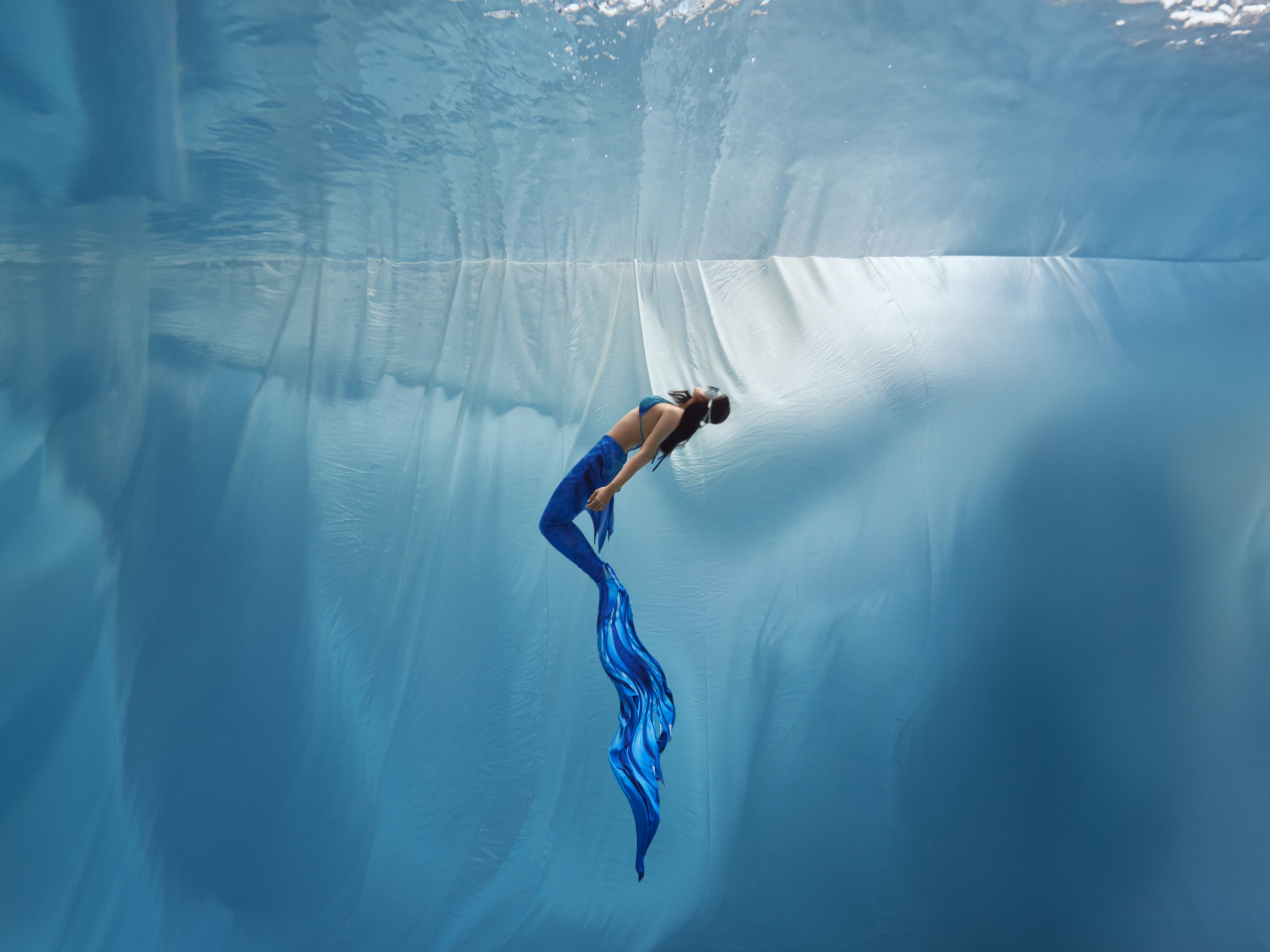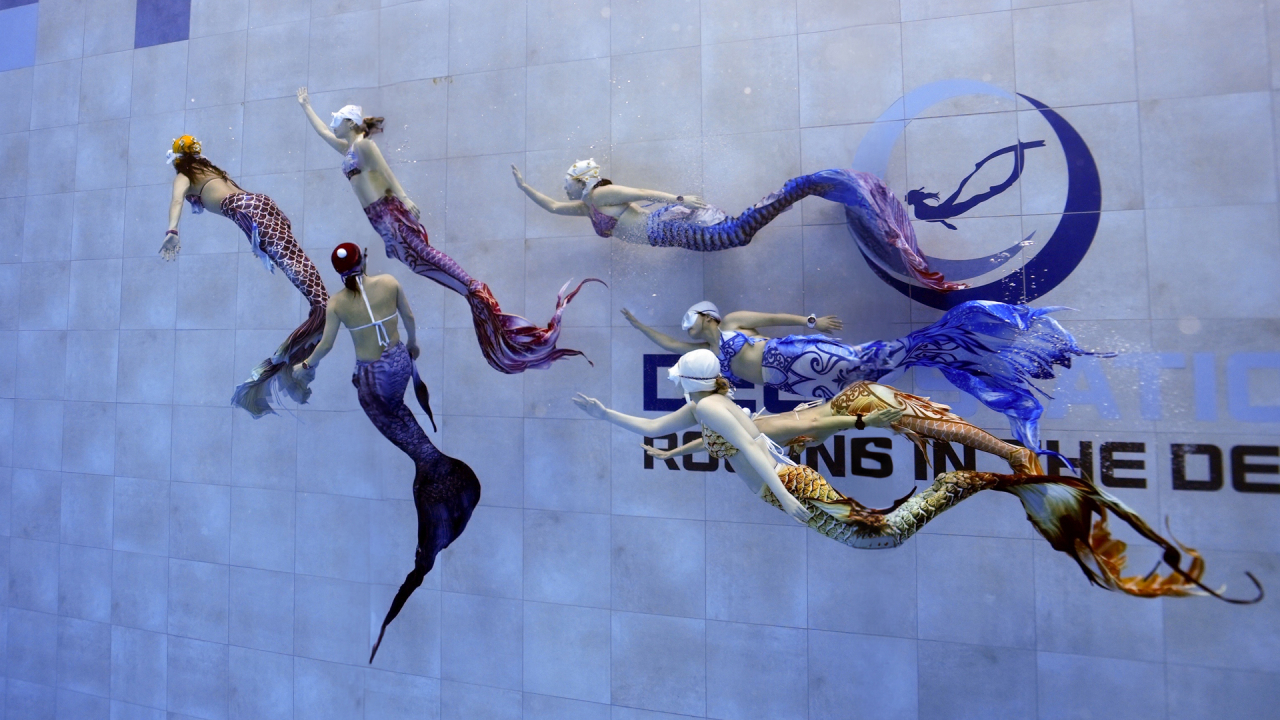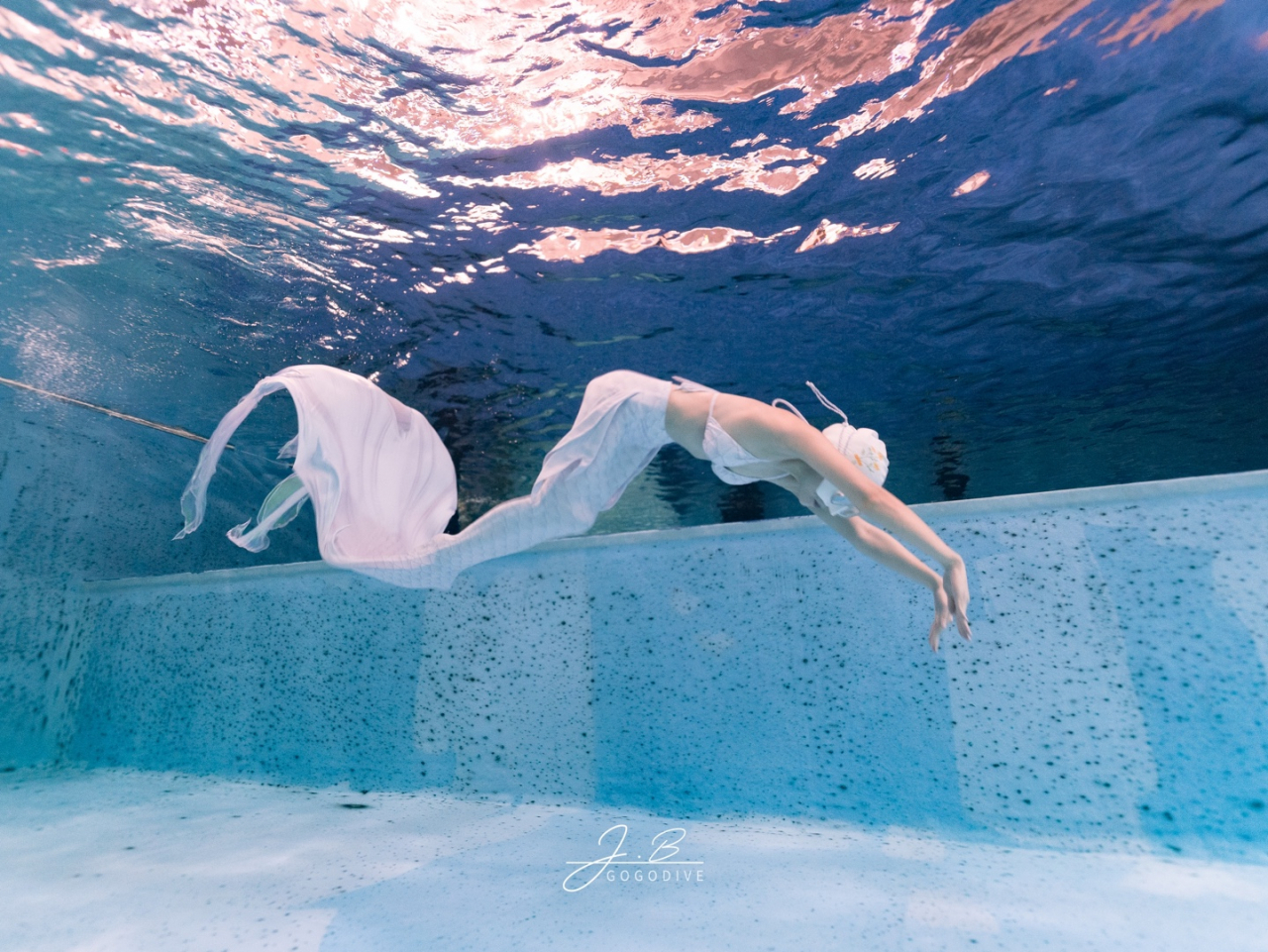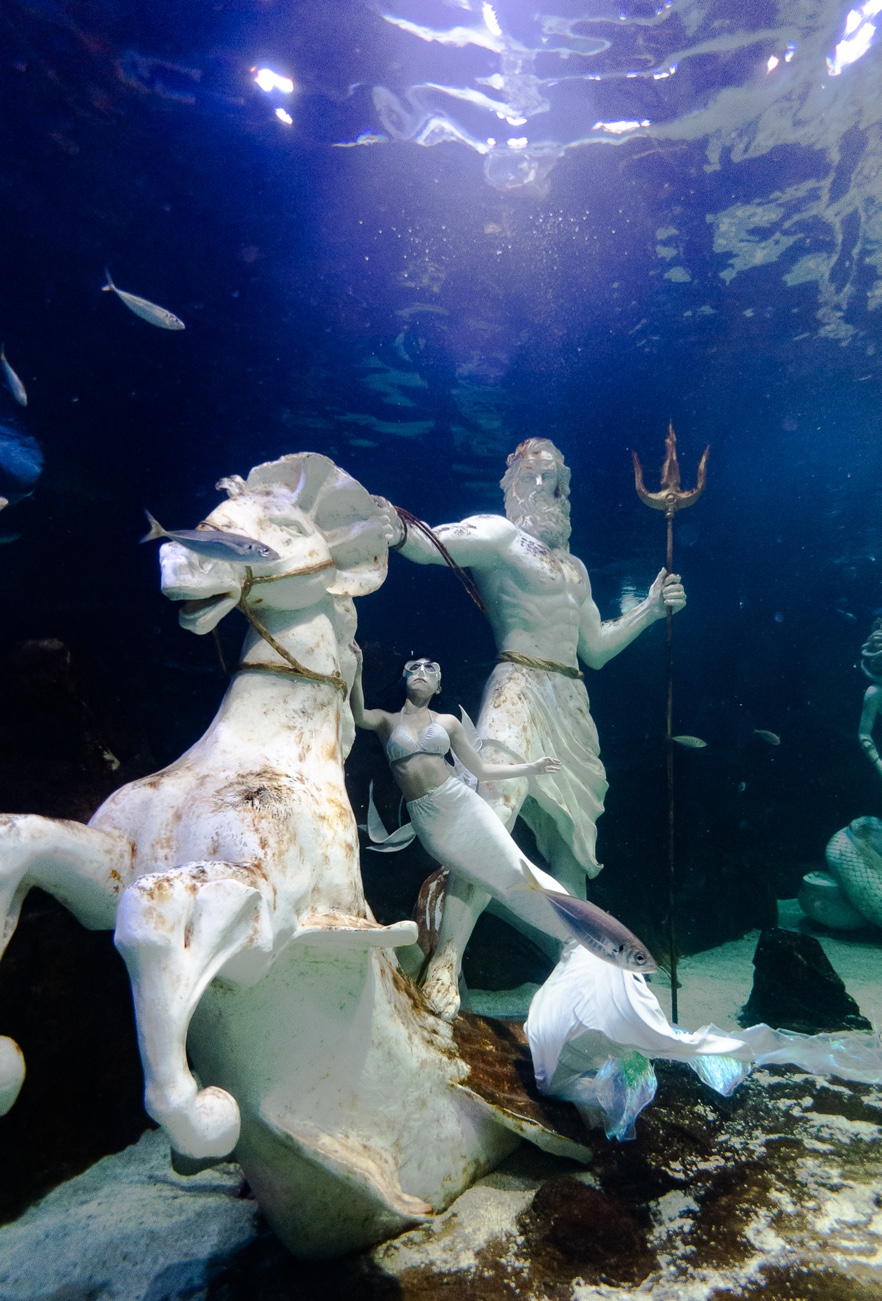[Weekender] 'Dive into fantasy': Korean aquaphiles turn to art of mermaiding
Korea's mermaiding scene blurs boundaries between fantasy and reality, challenges age and gender stereotypes
By Jung Min-kyungPublished : July 1, 2023 - 16:00
One of Kim Sun-min's new joys in life is to visit the local diving pool in Ilsan, a northwestern satellite city of Seoul. It is where the 42-year-old content marketer can become the mythical creature of her dreams -- a mermaid -- for at least a few hours a week.
"Mermaiding might seem like wearing a costume and posing for a photo underwater to outsiders," Kim told The Korea Herald at the Mer Freediving Center in Ilsan.
"But it's actually a combination of art and sports -- freediving is often compared to speedskating and mermaiding to figure skating," she explained, wearing a bright orange swimsuit and a matching mermaid tail.

Mermaiding -- the practice of wearing and swimming in a costume mermaid tail – is taking South Korean aquaphiles by storm.
A combination of cosplay, water ballet and diving, it is now being practiced by some 250 people nationwide -- mostly as a hobby, according to data provided by industry insiders.
Korea's mermaiding community is young. It was established some three years ago, but the local market has been expanding by 80 percent annually, according to a Korean official at the Professional Association of Diving Instructors, the world’s largest ocean exploration and diver organization, currently operating in 186 countries and territories.
"Korea, alongside China, is the fastest-growing market for mermaiding and also projected to be one of the largest in the world," the official said.
Don't judge a book by its cover
The second part of a two-hour mermaiding lesson hosted by Mer Diving, a diving community and institution with 100 mermaid practitioners in Korea -- the largest in the country -- on June 17 was dedicated to cultivating team work among members.
Kim was joined by 61-year-old Park Jeon-seom and 38-year-old web designer Lee Eun-hee during the lesson. Together, they practiced moving and swinging their tails in sync.
Their key goal was to shine as a team rather than alone.

"Not many people know that a key characteristic of mermaiding is developing teamwork and dancing in harmony with other mermaids," Im Bo-ra, a mermaid instructor at Mer Diving said.
"It's more complex than it looks because it accepts the unique movements of each merfolk. It's also important for each practitioner to develop their own traits at the same time."

The practice is often carried out in a pool at least 5 meters deep, which requires practitioners to have basic free diving skills.
"In Korea, it's a very organized industry," said Lee Seul, a 31-year-old mermaiding instructor at Gogo Dive -- a community with some 60 mermaid practitioners.
"There is a separate mandatory license to get for mermaiding instructors and for practitioners who view mermaiding seriously -- a three-level test to get an official certificate."
The three-level test is administered by the PADI. It consists of three levels from from easiest to hardest: basic, mermaid and advanced. The test aims to assess a mermaid's artistic and athletic abilities.
To receive an advanced level certificate, merfolk must form a team with one or two other practitioners and perform together for more than 4 minutes.
"Mermaiding is similar to free diving, but while the latter focuses on breaking personal records by depth, the former is more about enjoying both sports and the ocean environment itself."
Gender and age-inclusive activity
The perception of merfolk as young, thin and female has been dominant around the world for centuries. It was further implemented by the release of Disney's hit animation "The Little Mermaid" released in 1989.
It was only with the introduction of Netflix documentary "MerPeople" this year that people began to realize the community's diversity.
"Mermen," or male merfolk, are generally not easily found around the world. This is especially the case in Korea, where patriarchy is deeply rooted.
However, some men have decided to join the underwater pack, going against the tide of strict gender-based norms.
"I started with free diving, but decided to start mermaiding because I liked the aesthetic," Kim Mit-eum, a 29-year-old merman at Gogo Dive said.
"I've only received support from my fellow divers and friends about mermaiding, though there aren't many mermen in Korea."

Mermaiding is also age-inclusive, with its practitioners ranging between their 20s to 60s.
"I've been swimming for more than 20 years," a 61-year-old surnamed Park who does mermaiding at Mer Diving said.
"Then I loved free diving, so I thought to myself, 'Why not try mermaiding next?' It always presents fresh challenges in my life and keeps me going."
The cost of being a mermaid
While everyone can become a merfolk, there's a hefty price to pay.
For a one-day experience of mermaiding it costs around 69,000-80,000 won ($46-$61) per person. The price of a one-month course -- with around two lessons a week -- dedicated to studying for the mermaiding tests ranges from 400,000 won to 700,000 won per person.
Buying the necessary equipment is not cheap either.
"Fins," an essential part of mermaiding, can be rented from communities and institutions. They are usually made of lass fiber, rubber like diving monofins and carbon fiber or aluminum.
"Tails" which cover the entire leg are a different piece of equipment separate from fins, and are also rented or purchased. While they are made from different materials such as latex and silicone, in Korea water-resistant fabric is preferred by many.
"I've already purchased my fins, and am saving up money to purchase my tails," Park Ye-seon at Gogo Dive said.
"It costs some 200,000 won to buy a fin and another 300,000 won to purchase a tail."
Most mermaiding equipment is manufactured overseas, and those produced in China are the easiest to get access to, Park explained.
On top of it all, merfolk gather once or twice a year to travel overseas to vacation spots such as Saipan, Bali and the Maldives to swim together. Travel costs vary depending on the trip.
"The trips are a way to relax and become one with the ocean environment by expressing ourselves underwater," said Lee Seul.
A safe way to learn mermaiding is to check whether institutions are certified and registered with the PADI and the Ministry of Oceans and Fisheries. These certifications ensure that mermaiding institutions run their facilities and personnel safety checks properly.




















